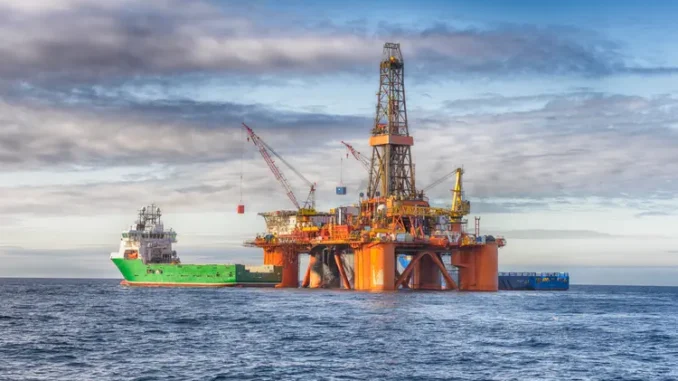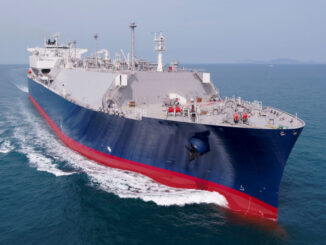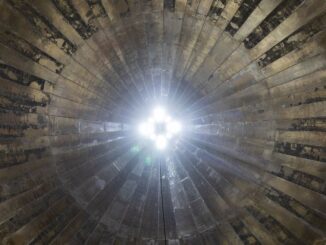
HIGHLIGHTS
Output seen at over 100,000 boe/d by 2024
Greater Tortue LNG will add incremental growth
Strategy of expanding stakes in existing fields
Kosmos Energy sees its production increasing 50% in the next two years, owing to first LNG from its Greater Tortue Ahmeyim project in Mauritania and Senegal, increased oil and gas volumes from Ghana, and a greater ownership of projects in the US Gulf of Mexico, the company’s top executive said May 9.
Kosmos expects to produce about 65,000 b/d of oil equivalent in 2022, with output rising to over 100,000 boe/d in 2024, CEO Andy Inglis said during a Q1 2022 earnings conference call.
Foremost is Greater Tortue LNG, where first production is expected late in 2023, Inglis said.
LNG demand is expected to grow sharply over the coming years, almost doubling by 2035, Inglis said, adding demand has grown “significantly” in the last few months as “a direct result of countries in Europe looking to reduce their dependence on pipeline gas and replace it with LNG from international markets on the back of the war in Ukraine.”
S&P Global Commodity Insights expects global LNG supply will exceed 750 billion cu m/y by the end of the decade, a roughly 42% increase over 2021, primarily driven by capacity expansions across North America and in Qatar.
War creates gas supply-demand gap
Inglis said the market was already short prior to the Ukraine war due to underinvestment in supply and growing demand, but incremental demand from Europe to displace Russian gas has created an even larger supply/demand gap.
Consequently, short-term prices have traded at all-time highs, and medium-term prices are also increasing, he added.
“We believe the longer-term outlook for LNG has fundamentally changed with higher prices likely to persist as a result of premium placed on greater security and flexibility,” Inglis said.
Kosmos has around 27% of an estimated 100 Tcf of gas in place across Mauritania and Senegal, and that gas will be important in meeting rising demand, Inglis said.
He said Mauritania-Senegal is cost-advantaged owing to its location and resource quality, and has “significantly” lower transportation costs into Europe than US supplies.
For example, sailing distance for an LNG cargo traveling from Tortue into one of the existing UK terminals or Wilhelmshaven, on Germany’s North Sea Coast and proposed site of new German import terminals, is 2,000 nautical miles with a sailing time of five to six days. From the US Gulf Coast, the distance is closer to 6,000 nautical miles or three times as long to deliver the same cargo, which translates to shipping costs that “could almost be $1/MMBtu higher at long-term charter rates,” Inglis said.
“We believe we can produce gas at an upstream cost of approximately $2 to $3 per MMBtu over the life of the field,” which compares favorably with current US gas prices around $8/MMBtu, he said.
Tortue gas in Mauritania and Senegal also has a carbon advantage with almost no CO2 in feed gas coming from the field, he added. And gas coming from Phase 2 of the project is yet to be priced, creating a “significant opportunity” for Kosmos when that gas arrives, Inglis said.
In Q1 2022, Kosmos produced 72,600 boe/d, nearly 37% higher than 53,100 boe/d in Q1 2021.
Q1 2022 production included 42,300 b/d net from Ghana, 18,800 boe/d net from the US Gulf, and 11,500 b/d net from Equatorial Guinea.
Upped stakes in Ghana
Kosmos acquired an additional roughly 18% interest in Ghana’s Jubilee field and 11% additional interest in Ghana’s TEN fields from Occidental Petroleum for $550 million, effectively in April 2021. Tullow Oil this year exercised its pre-emptive rights to the stakes, paying Kosmos what will ultimately be about $128 million that reduces Kosmos’ Jubilee interest by 3.8% and TEN stake by 8.3%. As a result, Kosmos will own 38.3% of Jubilee and 19.8% of TEN.
Kosmos is also a partner in the Jubilee South East project to boost production at Jubilee. Drilling is expected to start around year-end 2022, and production from the first well is pegged at mid-2023, pushing gross production of the field over 100,000 b/d of oil. In Q1, the field’s gross production averaged 91,000 b/d.
In addition, Kosmos increased its interest in the Winterfell discovery’s four core blocks by an additional 5.5% from one of the partners for about $10 million to about 22% total and 36.5% in the derisked northern blocks.
The company and its partners are expected to take a final investment decision on Winterfell in mid-2022, Inglis said. First oil is expected about 18 months after sanction.
Also, the company exercised its preferential right recently to buy another 6% in the producing Kodiak field, sited in the US Gulf offshore Louisiana, for about $28 million. The transaction has a payback period around 13 months at a $75/b oil price and an internal return rate of more than 95%, Inglis said. At the current price strip, payback should be less than a year with a 180%-plus return rate, he said.
“We’re clear about pursuing deals where we believe they are consistent with the strategy of the company: shorter-term, high-margin oil growth … supported by longer-dated quality gas,” Inglis said. “We’re looking to deepen in areas that we understand and, therefore, where there is true economic value that we can add.”
Source: Spglobal.com



